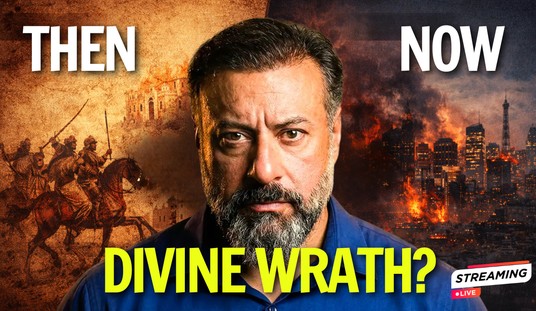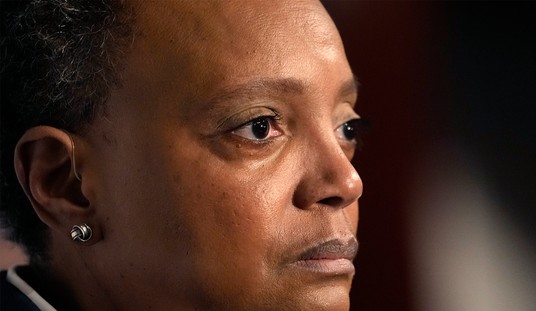News that it was “too late” to embalm the body of Hugo Chavez for permanent display has renewed speculation that he expired much earlier in Cuba. The new president “Nicolas Maduro announced that the decision to embalm Chavez, which was made two days after the president died, had been taken too late.” However it is entirely possible that Maduro’s two day delay was simply too long to allow for a cosmetically appealing burial. One mortician said:
“Ideally, a body would be embalmed “the very day or next morning, rather than three or five or six days down the road,” Mr. Fountain said. “But it’s not impossible. I have embalmed bodies that have been refrigerated for six months.”
The two-day delay answer would suit Occam. But then he lived before the age of Talking Points and electric razors. Today the narrative has become so important that the stories of the dead must be reconciled with the needs of the living. Take the case of a widely circulated photo showing a child dying in a Gaza hospital. The Washington Post, running a correction wrote: The Post’s caption on the photo said the child died ‘after an Israeli airstrike in Gaza City,’ which implied Israeli culpability. In fact the child had been killed by Hamas.
The Associated Press on Tuesday issued a correction for its caption for the photo. It wrote, “An errant Palestinian rocket, not an Israeli airstrike, likely killed the child during fighting in the Hamas-ruled territory last November, a U.N. report indicated, challenging the widely believed story behind the image which became a symbol of what Palestinians said was Israeli aggression.”
The mistake, according to the Washington Post, was due to “the fog of journalism” which came to light when UN investigators found a rocket crater consistent with Hamas ordnance and not anything the Israelis used at the point of impact.
The episode suggests “the fog of war and the fog of journalism” during a war, said Ken Light, a professor who oversees the photojournalism program at the University of California at Berkeley’s Graduate School of Journalism. News photographers are usually diligent about ensuring that they’ve placed their images in the proper context, he said, but in the middle of armed conflict, “a lot can get through the cracks. . . . A picture is worth a thousand words, but you don’t always know the circumstances that led up to making the picture.” …
The child’s father was a journalist employed by the BBC.
Despite the finding, the Gaza-based Palestinian Center for Human Rights said it still holds Israel responsible for the baby’s death, according to the AP.
The dead have stopped voting (except in certain cities in the Midwest) but the living still have to make a buck. Raymond Chandler observed that the dead withdrew into a kind of disinterest after their demise. In one of his classic detective novels, Chandler wrote:
What did it matter where you lay once you were dead? In a dirty sump or in a marble tower on the top of a high hill? You were dead, you were sleeping the big sleep, you were not bothered by things like that. Oil and water were the same as wind and air to you. You just slept the big sleep, not caring about the nastiness of how you died or where you fell.
Most people forget that in the sentences that follow Philip Marlowe squared his shoulders to continue the nastiness of the living, rolling up his sleeves to tend the narrative of the dead.
Me, I was part of the nastiness now. Far more a part of it than Rusty Regan was. But the old man didn’t have to be. He could lie quiet in his canopied bed, with his bloodless hands folded on the sheet, waiting. His heart was a brief, uncertain murmur. His thoughts were as gray as ashes. And in a little while he too, like Rusty Regan, would be sleeping the big sleep.
On the way downtown I stopped at a bar and had a couple of double Scotches. They didn’t do me any good. All they did was make me think of Silver Wig, and I never saw her again.
Perhaps General Sternwood really died not knowing what fruitcakes his daughters were. What was the harm in the lie? The living, bro, matter more than the dead. So it wasn’t on account of the dead but of the living that Republican lawmakers threatened to subpoena the U.S. survivors of the attack on the Benghazi consulate. While nothing they can do will waken the men sleeping the Big Sleep the Big Story is still up for grabs. ‘How did they really die? The living want to know’.
In January, the three-day hostage-taking of American and other Western oil workers in Algeria ended with 23 hostages dead. The U.S. survivors were able to tell their story quickly, and several soon appeared on CBS’s 60 Minutes to answer questions about their ordeal.
But the survivors of the 9/11/13 terrorist attack on Benghazi that left U.S. ambassador Chris Stevens and three coworkers dead have been “sequestered” or hidden for a full six months. Congress, which has plenty of questions about how and why the Benghazi intelligence failure happened, has been stonewalled.
That’s why fed-up GOP members say that they are prepared to issue subpoenas for some of the survivors to appear before Congress if they don’t get more of their questions to the White House answered.
Nowhere is struggle over the narrative of death greater than in the case of Trayvon Martin and the controversy now surrounding his phone. The lawyers for George Zimmerman are inquiring into why the prosecution managed to send his phone to California to be unlocked and how it was the techs recovered everything except for data pertaining to the day and evening of the shooting.
George Zimmerman’s attorneys have filed a motion to delay George Zimmerman’s trial until November. …
According to the Motion to Continue, the state told O’Mara that when Trayvon’s phone was recovered, the phone was wet and inoperable. On August 8, at a joint meeting, O’Mara asked if a charger could be used to restart it. FDLE analyst Steven Brenton came in and charged up the phone. When the screen came up, it said the phone was “locked out,” meaning someone had tried to unlock it more than the maximum permitted times with the wrong password. Brenton then disclosed he had performed an analysis of the phone, but was only able to access the SIM card and SD card, not the internal memory. (Eventually, O’Mara received some of the material Brenton had downloaded from the phone and Brenton’s report.)
Sometime after that, someone at the state’s attorneys office shipped Trayvon’s phone to a law enforcement agency in California for analysis. The agency was “seemingly able” to access the internal memory. The state refuses to give the defense any information as to who at the state’s attorney’s office decided to do this, the name of the agency it was sent to, the identity of the analyst who obtained the data, or the results obtained.
After the unnamed agency returned the phone, during the first week of January, 2013, the state sent it to Cellebrite in New Jersey for analysis. Cellebrite also was able to access the internal memory, and the state provided the defense with the results on January 18. The defense says Cellebrite obtained an “enormous” amount of information from the internal memory. But, guess what’s missing? All data for Feburary 26, the day/evening of the shooting.
As illustrative example, while the analysis includes GPS locating records for Mr. Martin’s phone for all of the time that he was in the Sanford area, specifically absent is any such data for February 26, 2012, the date of the event. Similarly, there seems to be missing entries regarding phone calls or texts made to or from the phone in the evening hours of February 26,2012.
The affair has long ago stopped being about George Zimmerman or Trayvon Martin. It’s now all about racial politics, lawyer’s fees and exclusive rights on exclusive interviews.
History suggests that factual conclusions, once politicized, never completely regain the character of facts. Who killed JFK? Was the World Trade Center imploded or destroyed by attacks ordered by Osama Bin Laden? Did Apollo 11 really land on the moon? When did Hugo Chavez die? What happened in Benghazi? Where are Trayvon Martin’s phone GPS records? Does ‘global warming’ exist? When you know the answer, post it. No matter how it comes out, no one will believe it — not completely, anyway.
The story goes that in Stalin’s day a man was walking through the corridors of Pravda. He met two editors and said, “I have just come from out town. Tell me, what is the news?” They answered, “if you want to know what will happen tomorrow we can tell you with exactitude. But as to what happened yesterday, we are still trying to decide.”
The Three Conjectures at Amazon Kindle for $1.99
Storming the Castle at Amazon Kindle for $3.99










Join the conversation as a VIP Member